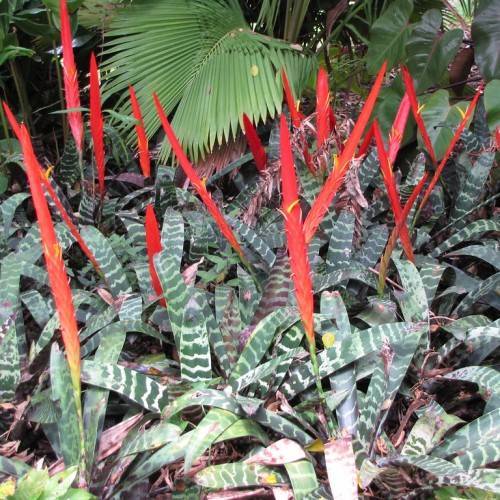
vriesea
Vriesea splendens
Cycle:
Perennial
Watering:
Average
Hardiness Zone:
10 - 12
Flowers:
Flowers
Sun:
part shade,part sun/part shade
Leaf:
Yes
Growth Rate:
Low
Maintenance:
Low
Thorny:
Yes
Indoors:
Yes
Care Level:
Medium
watering
Vriesea plants should be watered lightly once a week, during the active growing season, with the soil becoming slightly dry between waterings. During the winter months, water should be reduced to only every 2-3 weeks or when the plant soil is almost bone dry. It is also important to make sure that the plant is not getting too much water, as this can cause root rot.
sunlight
Vriesea (Vriesea splendens) require bright, indirect sunlight for optimal growth. Place the plant near an east- or south-facing window for 4-6 hours of sunlight per day, which can be supplemented by an artificial fluorescent light source for up to 8 hours per day if needed. Avoid direct sunlight as this can damage the leaves. If keeping the plant outdoors, ensure that in receives dappled shade throughout the day.
pruning
Vriesea (Vriesea splendens) should be pruned lightly in spring and summer to maintain health and shape. Pruning should be done only when necessary. Light pruning can be done by simply removing dead or dying leaves and by removing yellow foliage as soon as it appears, while larger pruning sessions should be done once or twice a year. To do so, use clean, sharp pruning shears to remove any dead or damaged branches and stems, allowing for increased air circulation and light. Pruning can also be done to encourage the production of new leaves and flowers. Make sure not to over-prune your Vriesea, as this can cause it to become unhealthy and weak.
